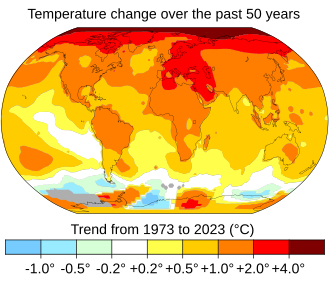Climate change
Climate change refers to the long-term changes in the Earth's climate, including changes in temperature, precipitation, and weather patterns. These changes are primarily caused by human activity, including the burning of fossil fuels, deforestation, and industrial processes. This article will explore the causes and effects of climate change, as well as measures that can be taken to address it.
Causes of Climate Change
Climate change is primarily caused by the release of greenhouse gases, such as carbon dioxide, methane, and nitrous oxide, into the atmosphere. These gases trap heat from the sun and cause the Earth's temperature to rise. Human activities, such as burning fossil fuels, deforestation, and industrial processes, have greatly increased the amount of greenhouse gases in the atmosphere.
Effects of Climate Change
Climate change has numerous effects on the environment and human society. Rising temperatures and changing precipitation patterns can lead to more frequent and severe weather events, such as hurricanes, droughts, and wildfires. Changes in weather patterns can also affect agriculture, food production, and water resources. Climate change can also have a significant impact on biodiversity, as it can alter ecosystems and threaten the survival of many plant and animal species.
Mitigating Climate Change
Mitigating climate change requires a collective effort from individuals, businesses, and governments. One of the most effective ways to address climate change is to reduce greenhouse gas emissions. This can be accomplished by increasing energy efficiency, transitioning to renewable energy sources, and reducing deforestation. Additionally, individuals can reduce their carbon footprint by driving less, using public transportation, and consuming less meat.
Adapting to Climate Change
Adapting to the effects of climate change is also important, as some changes are already underway and cannot be reversed. Adaptation measures may include building sea walls to protect against rising sea levels, improving water management, and developing drought-resistant crops.
Also see
This is a short summary article. For quality control, we do not encourage or allow strangers to edit the content.

